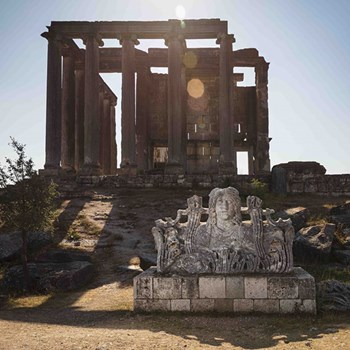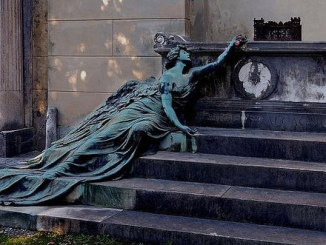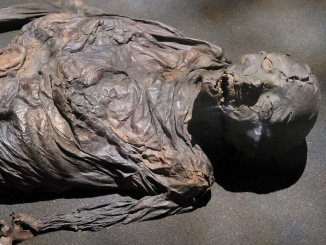

With the beginning of summer, a new season of archaeological wexcavations has started in the ancient city of Aizanoi in Kütahya’s Çavdarhisar district, as the unique site still has much more historical artifacts waiting to be unearthed.
Governor Ali Çelik, stated that the excavations in the ancient city, which is home to the best preserved Zeus Temple in Anatolia and included in the UNESCO World Heritage Tentative List since 2012, were carried out by Kütahya Dumlupınar University (DPÜ).
Çelik stated new findings are expected to be unearthed during the excavations to be carried out this year under the leadership of Professor Gökhan Coşkun, Head of the Archeology Department of the DPÜ Faculty of Arts and Sciences.
“Intensive work is planned in the sectors of Penkalas Stream (Koca Çay), agora (bazaar), propylon, theater and Meter Steunene sanctuary this season. We have made great progress, especially in the Penkalas Project and we are nearing the end,” Çelik said.
“I sincerely hope that this season is once again full of discoveries. There will be new doors open for us about Aizanoi’s mysterious past. The passion, knowledge and dedication of our excavation team will undoubtedly make a tremendous contribution to our history this season as well.”
Archaeologists begin working on excavations in ancient city of Aizanoi, in Kütahya, Türkiye, July 5, 2023. (AA Photo)
Archaeologists begin working on excavations in ancient city of Aizanoi, in Kütahya, Türkiye, July 5, 2023. (AA Photo)
Çelik wished success to the excavation team, who worked with great devotion to reveal the secrets of the past.
It is estimated that the city area of Aizanoi, which is 57 kilometers (35 miles) away from the city center of Kütahya and is considered one of the main settlements of the Aizanitis of Phrygia, has been used since 3000 B.C.
It is stated that the city, which was under Roman rule in 133 B.C. and was also the center of the bishopric, lost its importance in the early Byzantine period. European travelers discovered the city, which was the base of the Çavdar Tatars in the 13th century and was later renamed Çavdarhisar, in 1824.
During excavations carried out by the German Archaeological Institute between 1970 and 2011, archaeologists were able to unearth the best-preserved temple of Zeus in Anatolia, a theater, a stadium, two baths, the world’s first stock market structure, columned street, five bridges over Kocaçay, “Meter Steunene” sanctuary, necropolises, a dam and water ways.
Settlement layers dating back to 3000 B.C. were found around the temple of Zeus.
The license of the German Archaeological Institute, which has been working in the ancient city during the summer months for 41 years since 1970, was canceled in 2011 by the decision of the Council of Ministers, and the excavation task was given to Turkish archaeologists.


